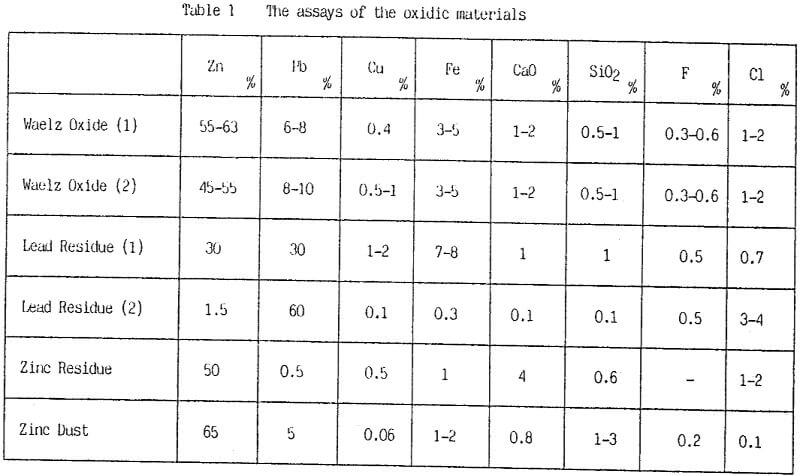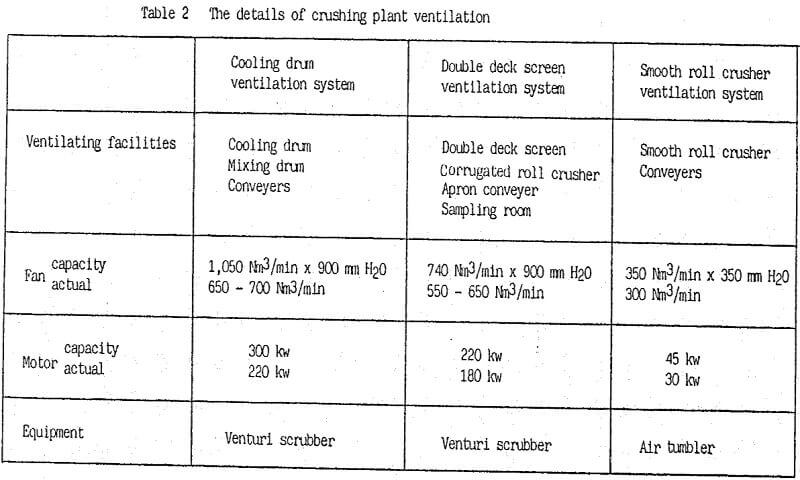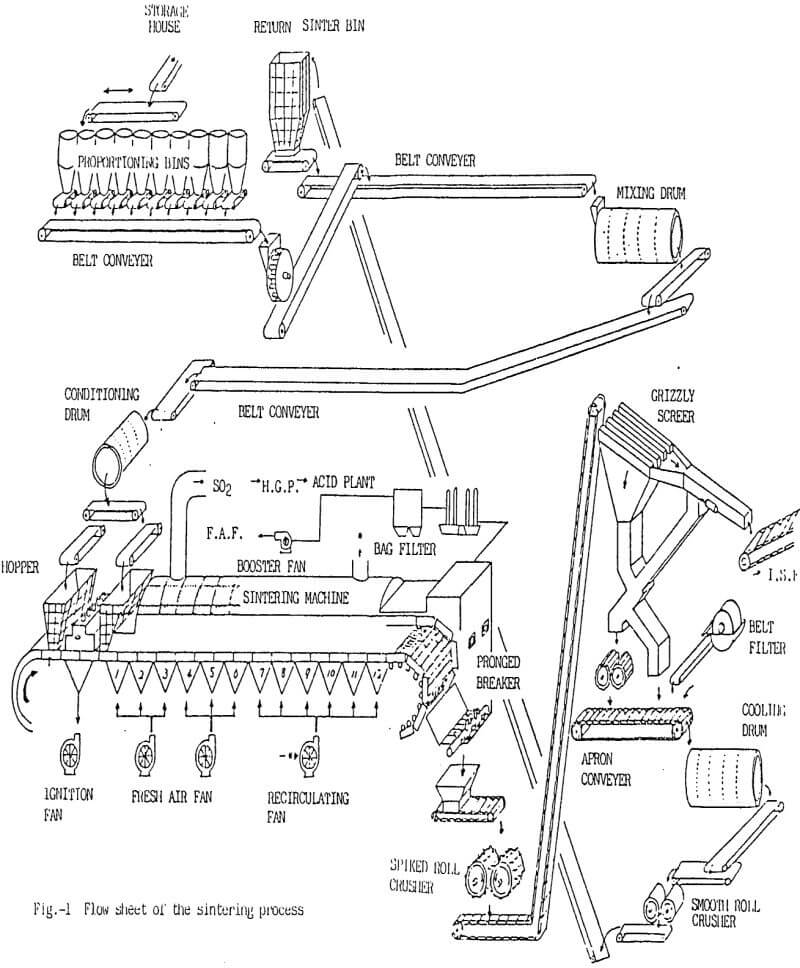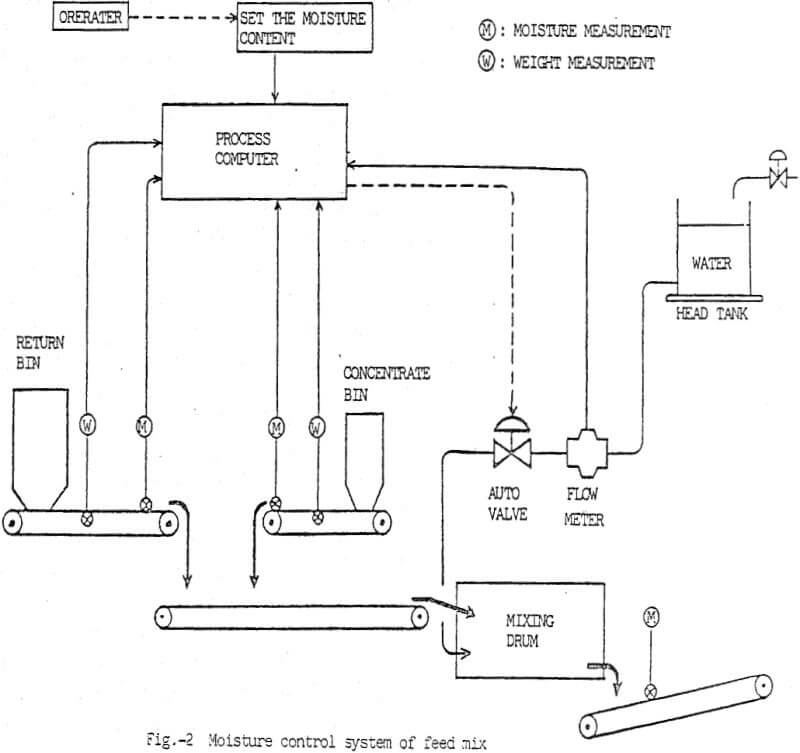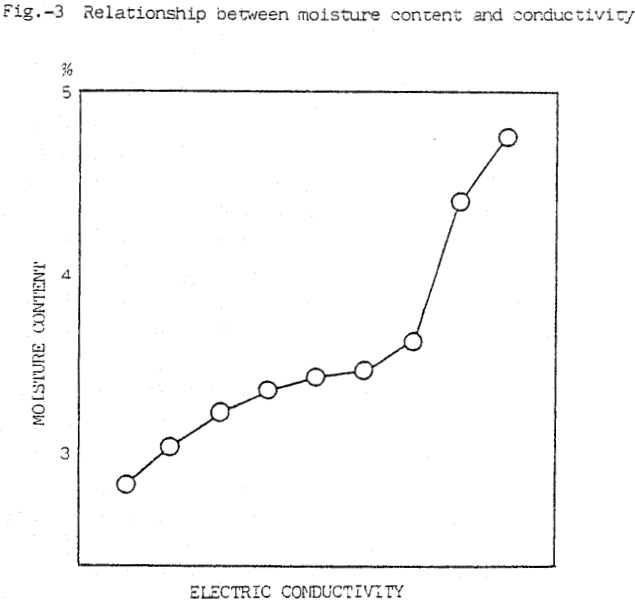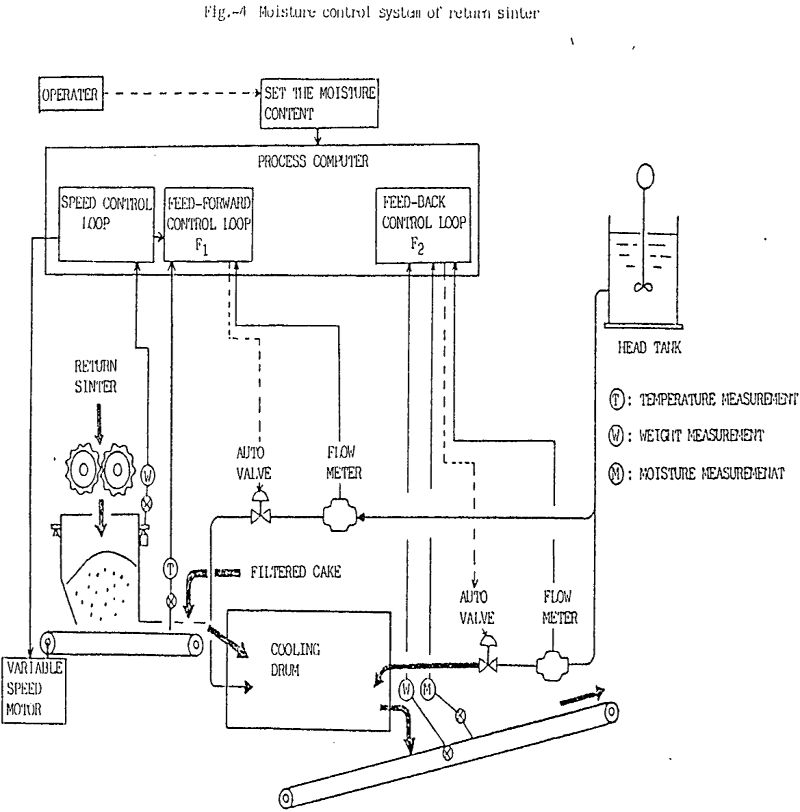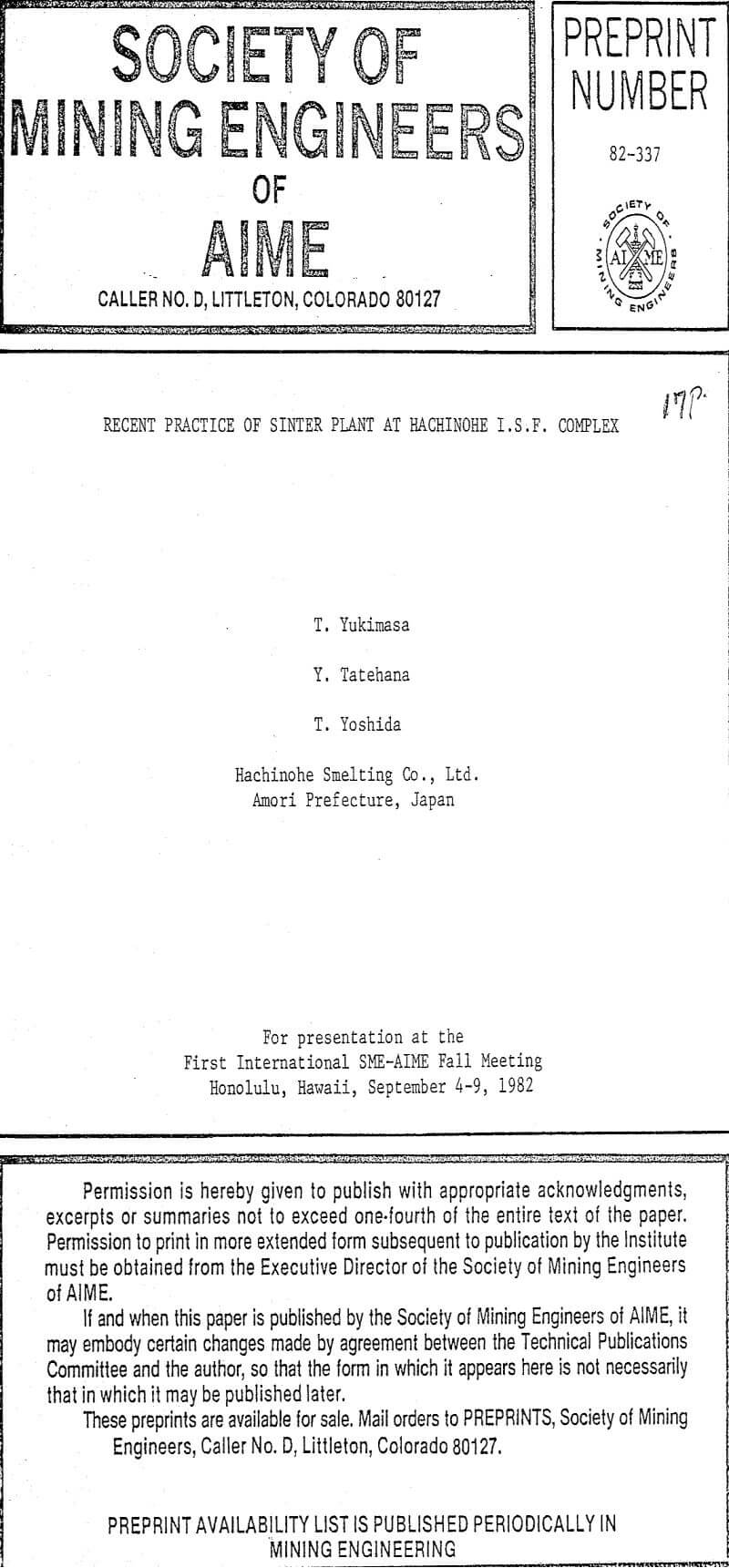Table of Contents
The sintering process for the preparation of raw materials to be fed to the Imperial Smelting Furnace (I.S.F.) is rather diversified in its characteristics. In comparison to the other preparation process for zinc extraction, i.e., fluidized bed roasting, the sintering process enables the Imperial Smelting Process (I.S.P.) smelter to treat a variety of raw materials.
Process Control of Sintering Plant
Sulfide concentrates, oxide materials and I.S.F. dross are prepared in the proportioning bins (There are ten bins for raw materials.). The raw materials and flux are fed by separate variable speed belt conveyers consisting of computer controlled belt weighers.
Raw materials and crushed return sinter are then mixed and pelletized in mixing and conditioning drums. The moisture content of return sinter is controlled to within 2 – 3 % in the cooling drum as will be explained later. In the mixing drum, the moisture content of the mix is controlled to about 4 – 5 % which is very important for keeping good permeability of the feed mix to the sinter machine.
Feed mix thus uniformed in the preceding process is fed respectively into an ignition and a main layer hopper of the sintering machine by a reversible conveyer. The weight of the materials in the hopper is continuously measured by a couple of load cells and the machine driving speed is controlled to keep this weight constant.
Oxide Use in Sintering
The original function of the sintering process of the I.S.P. is both to eliminate sulfur and to make hard sinter from zinc and lead sulfide concentrates. But the imbalance of the sulfuric acid demand/supply and various policies on resource recycling have required us to treat a great deal of secondary non-sulfidic materials.
One of the advantages for the I.S.P. among modern zinc extraction processes is its wide capacity for treating various kinds of raw materials. From this point of view, to increase the secondary material treatment in the sintering process is a very important challenge both technologically and economically speaking. It is also essential for the smelter to have a competitive position among other processes such as the electrolytic zinc process.
Chlorine, on the other hand, acted in a different manner from fluorine. It also was increasing but the bleeding of chlorine was rather easy. Chlorine charged into the sintering machine forms metal chlorides during sintering reactions which tend to volatilize and are condensed into cadmium dust.
In the leaching process, the chlorides dissolve into a liquid phase, then go to the effluent treatment process. In this stage, however, chlorine remains in the effluent, which is later disposed. The problems at each process, which were caused by a high level of fluorine and chlorine charges, are summarized as follows :
Energy Savings of the Sintering Process
As mentioned in the first chapter, the sintering process consumes oil and electricity. The electric power consumption especially had been continually increasing from 1970 to meet the growing necessity of taking measures under the nation – wide reconstruction of strict anti-pollution regulations.
The electric power consumption of the sintering process consists of high voltage electricity for driving high capacity fans, such as fresh air fans and ventilation fans and low voltage electricity for driving other motors and lighting facilities.
In the first step of the modification, the cooling drum ventilation system was examined. In this system, the mixing drum and some belt conveyers could be ventilated by natural draft from a stack because these ventilating gases contained no substantial dust to be eliminated, which was due to the fine moisture control of the preparation process as described earlier.
Originally the shape of the ignition stove was of an arch construction, like a small reverberator/ furnace. This meant that ignition of the machine feed was made by the hot atmosphere in the stove. However, to maintain the stove in such a hot state, oil of some 3,600 l/d was needed. If ignition could be made by a direct flame of burners, it was thought that oil consumption could be greatly reduced. Based on this concept, we analysed the mechanism of ignition performed in the stove, which suggested that our hypothesis was correct.
